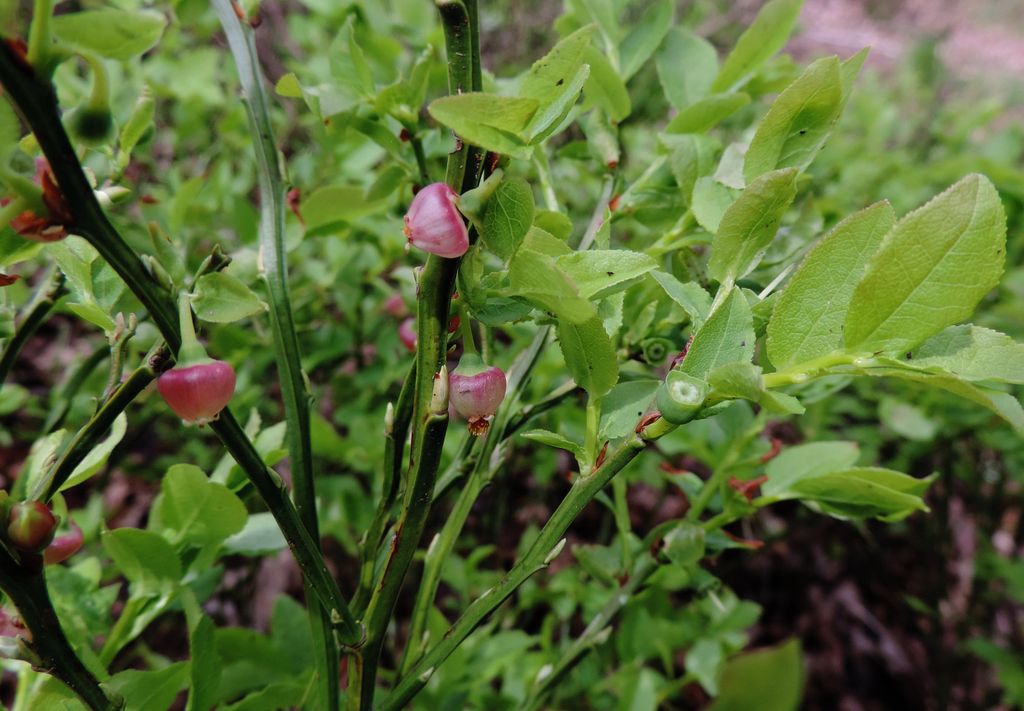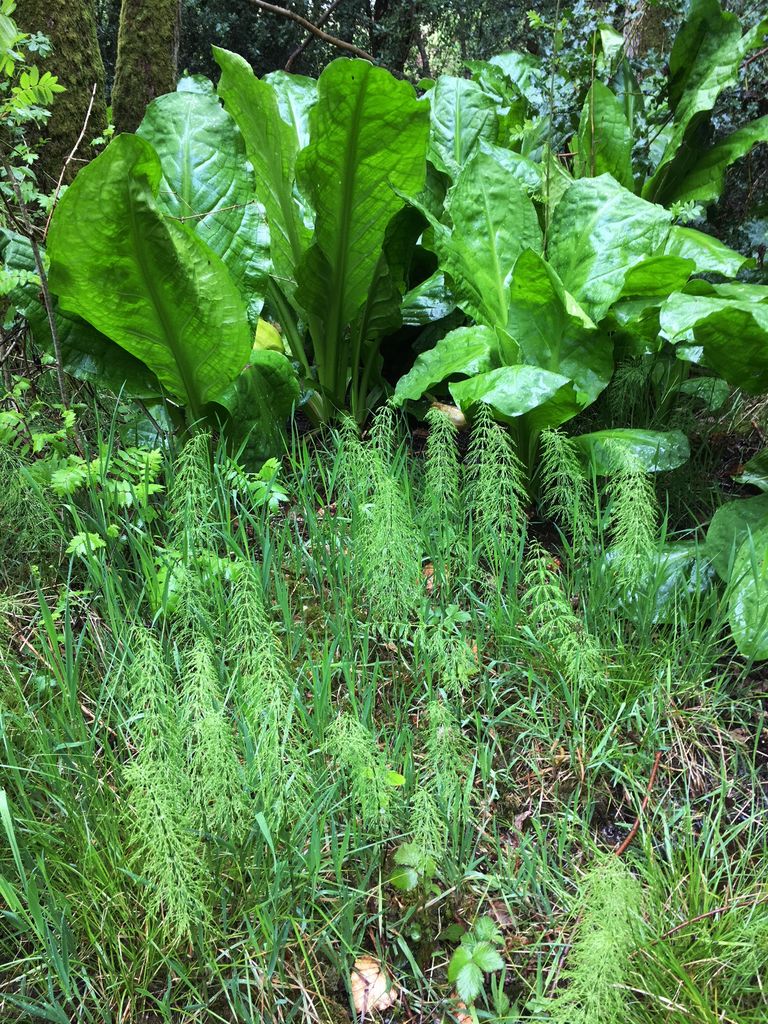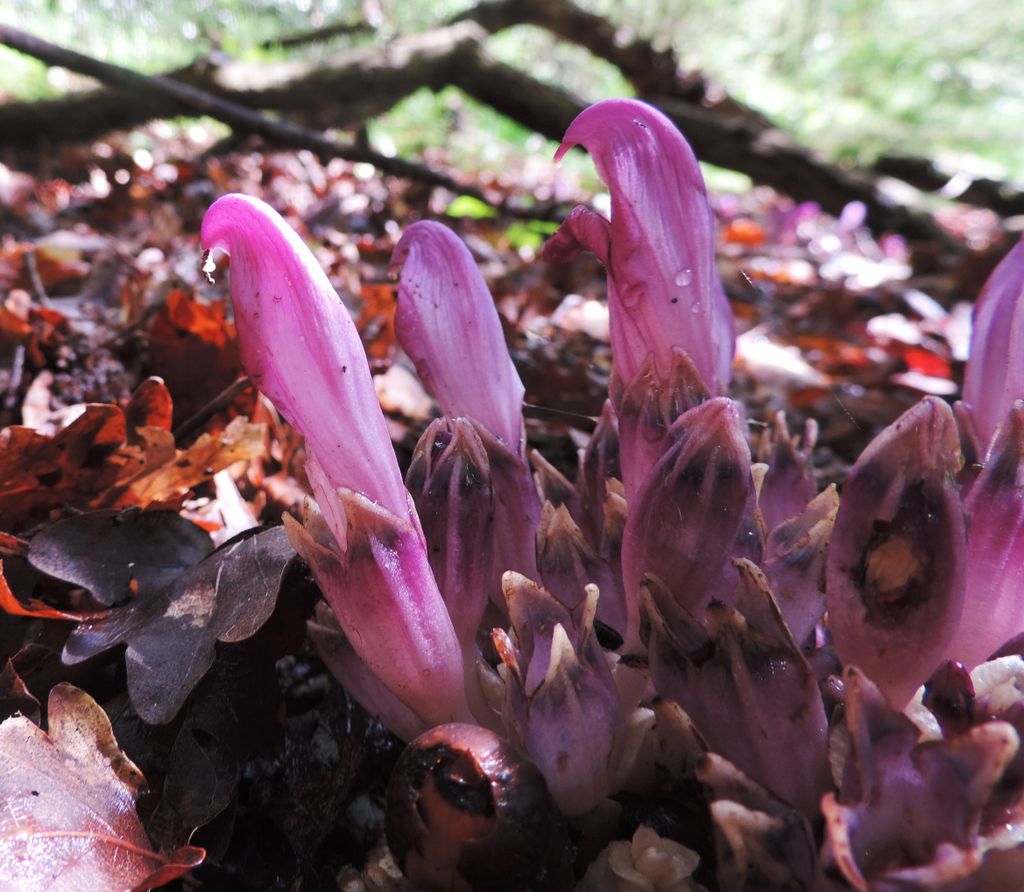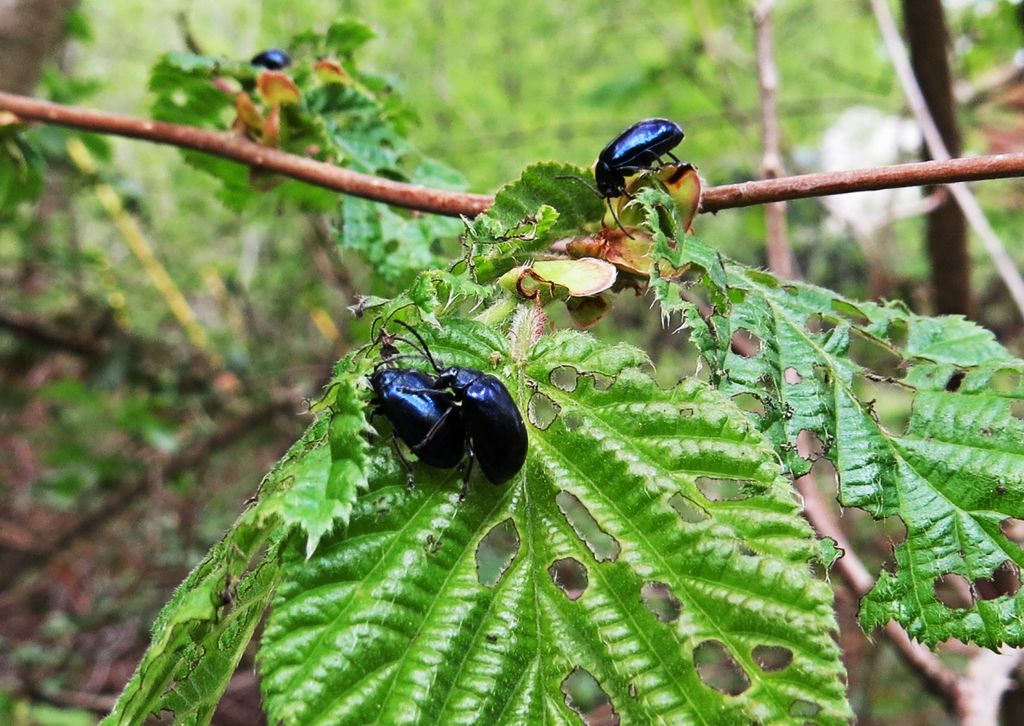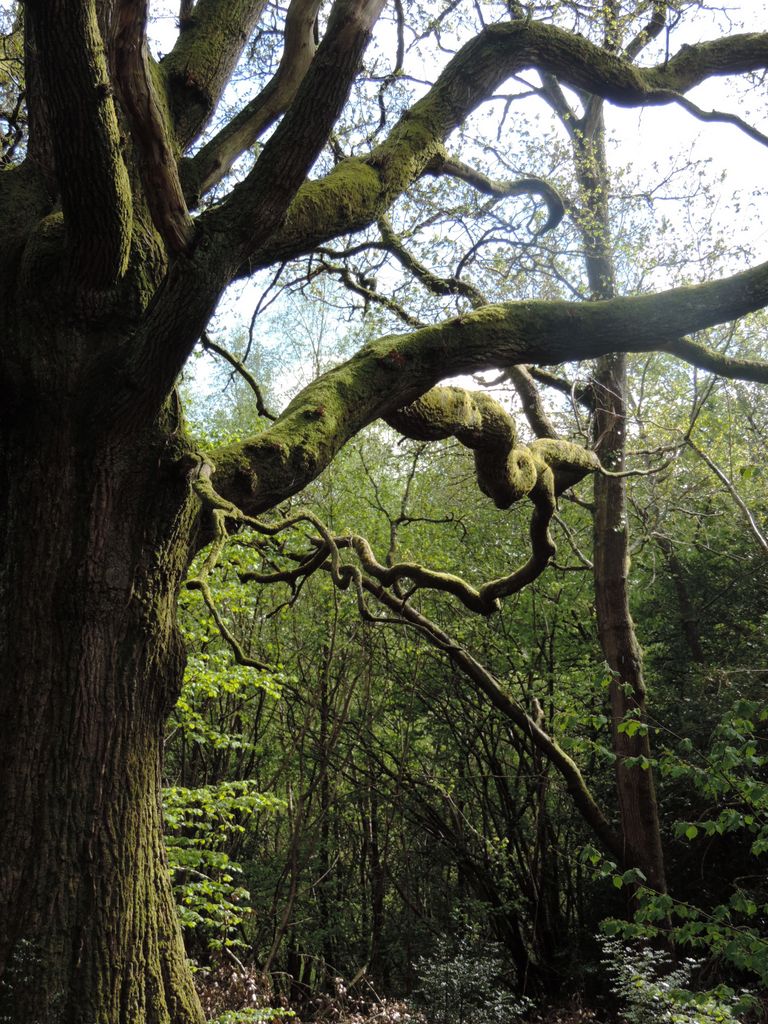Rob Stallard led a circular walk round Newtown and Burghclere Commons and Herbert Plantation on the morning of Wednesday 19 May. The walk was attended by nine members, with another six joining Rob on the pre-walk earlier in the week. This was a new venue for the Society. Meeting point was the car park at the junction of Jonathan Hill and Well Street in Newtown, to the south of Newbury. The walk started and ended in sunshine, with variable amounts of cloud in between. The walk started out through woodland of predominantly Oak, Birch and Pine. Bilberry was abundant on the woodland floor and some of the plants had pink flowers. There were also clumps of Common Cow-wheat. The path led out into a heathy clearing with Heather, Gorse and Dwarf Gorse, before dropping down into a wooded stream valley. Wood Horsetail, with its branched ‘branches’, was found on the wettest parts of the stream bank, together with Marsh-marigold, Ramsons and the invasive Skunk Cabbage. Continuing up through the wooded valley side, the path led to a clearing where the parasitic Purple Toothwort was growing under a big Holly. There was no sign of its host plants, which are Alder, poplar and willow. Other flowers seen nearby included Wood-sorrel, Solomon’s-seal and Pink Purslane. The route then led across a grassy field where Pignut was in flower. Cuckooflower, Marsh Thistle and sheets of Ramsons were flowering in a damp corner of the field. Tufts of Purple Moor-grass and the leaves of Heath Bedstraw were noted in an open stretch of Common, with Sheep’s Sorrel, Germander Speedwell and a basking Peacock butterfly seen in the cleared area below a power line. The walk continued along Sheepwash Lane and over a footbridge next to a ford. Three-nerved Sandwort, Wild Strawberry, Alder Buckthorn and a Red Admiral butterfly were seen here.
The next section of the walk crossed an open area of Burghclere Common and led into Herbert Plantation. The plantation is a Local Nature Reserve managed by Hampshire Countryside Service. It was planted with spruce in the 1920s. This has since been felled and it is now managed for wildlife. The marshier areas have been left untouched and some notable trees are scattered through the woodland. Sightings here included Wood Spurge, Solomon’s-seal, Yellow Pimpernel, Sanicle, Red Campion, Wood Speedwell, Bugle, Common Dog-violet, Wood Sage, Heath Speedwell, Common Bird’s-foot-trefoil, Scaly Male-fern, Wood and Remote Sedge, Hairy Wood-rush, Guelder-rose, Norway Maple, Wild Privet and a Brimstone butterfly. Many small Alder Beetles were seen on assorted vegetation. An interesting collection of trees were growing on an old wood bank. An unfamiliar whitebeam was later identified as Sorbus x hybrida, a new record for the area. There was an enormous multi-stemmed Oak and another big Oak of wide-girth. The exposed roots indicated that the bank was older than the trees. A short diversion led to an area of mire where rosettes of sparsely spotted leaves were thought to belong to Heath Spotted-orchid. Small bright yellow globes of the Bog Beacon fungus Mitrula paludosa were found in shallow pools of water. The walk continued to an area of wet Alder carr woodland next to a stream at the eastern edge of the plantation. The vegetation was dominated by big clumps of Greater Tussock-sedge and Hemlock Water-dropwort, but closer investigation also revealed small plants of Opposite-leaved Golden-saxifrage. The next track led back up to an open area of Newtown Common. Both Ling and Cross-leaved Heath were found, together with Heath Milkwort and Tormentil. A Green Tiger Beetle was found beside the path. More leaf rosettes of Heath Spotted-orchid were growing in a damp area next to a stream which crosses the common and there was more of the Bog Beacon fungus. Climbing back up to drier heathland, scattered Rowan trees were in flower, a Garden Warbler sang from a dense stand of Birch and three Brimstones flew in the strengthening sunshine. Finally, while heading back along the track to the car park, 3 attractive yellow-flowered Azaleas were inspected.
Bilberry Wood Horsetail and Skunk Cabbage Purple Toothwort Bog Beacon Alder Beetles Notable Oak
Pictures by Rob Stallard, Sarah White and Fiona Brown

